To make our humidifier reviews more rigorous and useful for our audience, we have built a rating system that includes a few quantitative measurements and subjective assessments.
Whether you’re a newcomer to the realm of humidifiers or a seasoned user, our system offers insightful criteria for making informed decisions. We will go through each factor in the system on this page so that you can understand how we rate them exactly.
Our Overall Ratings
Our overall ratings are calculated based on a weighted average of 6 scoring factors. We choose these factors and decide their weight according to our first-hand experience and the interviews with many real customers.
We also cover many data that don’t affect our score but are still important for a buyer such as dimensions and price.
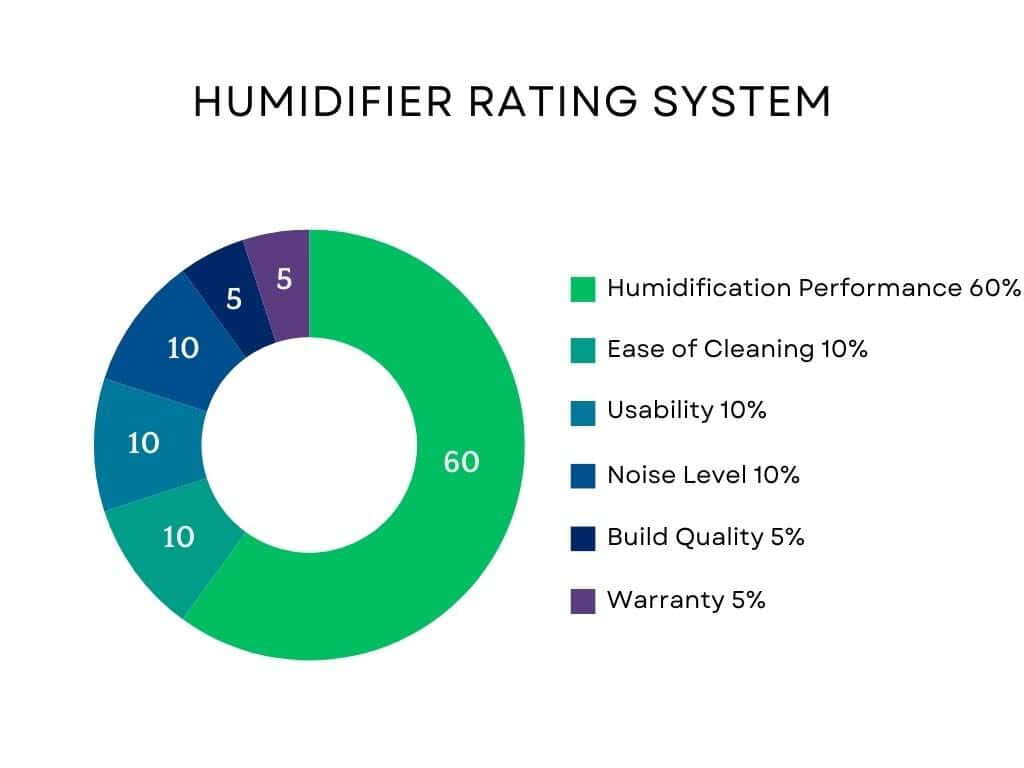
The weight of each factor:
Humidification Performance: 60%
Usability: 10%
Build Quality: 5%
Ease of Cleaning: 10%
Noise Level: 10%
Warranty: 5%
Understand our overall ratings
We employ a 10-point scale where a higher score indicates a better humidifier. However, we strongly recommend reviewing the scores in each category. This ensures that you make an informed decision, considering any minor shortcomings that may exist and aligning with your preferences.
10 – the humidifier should be perfect in every aspect. Almost everyone will be satisfied with it.
9.5-9.9 – the humidifier is excellent and most people will like it.
9.0-9.4 – the humidifier is great but there is room for improvement.
8.5-8.9 – the humidifier is good but it has one or two minor drawbacks that some customers don’t like.
8.0-8.4 – the humidifier is OK but it may have some shortcomings you want to avoid.
7.5-7.9 – the humidifier is not a good choice and it has some crucial drawbacks.
<7.5 – the humidifier is something you should avoid.
Humidification Performance 60% – Objective Test

The primary objective of a humidifier is to elevate indoor humidity levels, making humidification performance the pivotal factor to consider. Our tests are conducted in a 10″ x 16″ room, with meticulous attention to maintaining ambient humidity levels between 40% and 50% to minimize experimental error.
Recognizing the fluctuating nature of temperature and indoor humidity, we’ve opted to employ the evaporation rate as the criterion for assessing humidification performance. To derive accurate results, we weigh the humidifier before and after a 1-hour operation using a scale, calculating the amount of water evaporated.
Given that most humidifiers offer multiple mist levels, our evaluations focus on the highest mist setting. It’s worth noting that evaporative models may require a brief period to perform optimally. Consequently, we initiate testing after two weeks of continuous operation, during which the humidifiers are used for at least 8 hours per day.
Here’s the scale we use to determine humidification performance scores:
10 – evaporation rate ≥ 250 ml/h
9.5 – 200 ml/h < evaporation rate ≤ 250 ml/h
9.0 – 170 ml/h < evaporation rate ≤ 200 ml/h
8.5 – 130 ml/h < evaporation rate ≤ 170 ml/h
8.0 – 100 ml/h < evaporation rate ≤ 130 ml/h
7.5 – 50 ml/h < evaporation rate ≤ 100 ml/h
7.0 – evaporation rate ≤ 50 ml/h
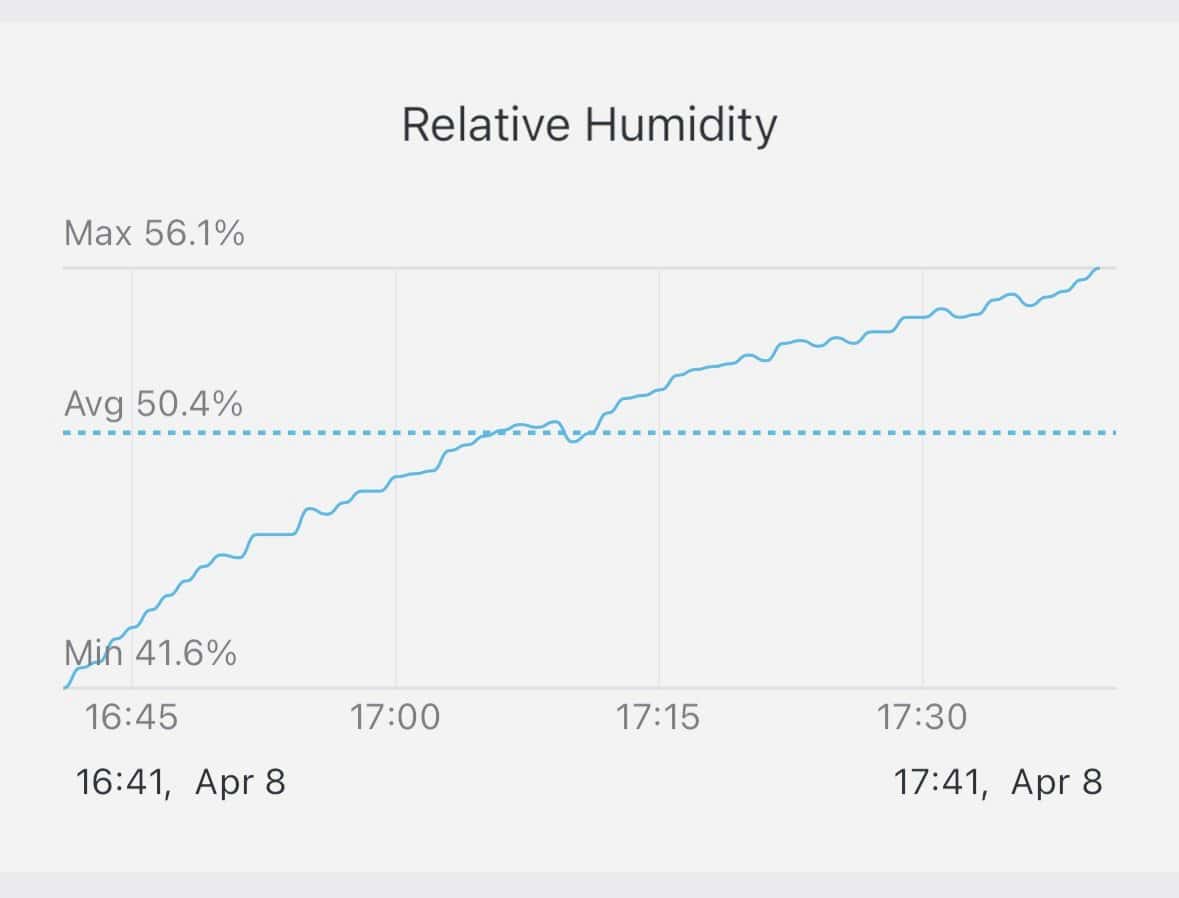
We also use the hygrometer that is placed 2 meters away from the humidifier to record the humidity level change within one hour. The diagram makes it easier for our audience to identify the performance of each humidifier. However, since it is also affected by the temperature and ambient humidity level, we don’t use it to decide the score.
Ease of Cleaning 10% – Subjective Assessment
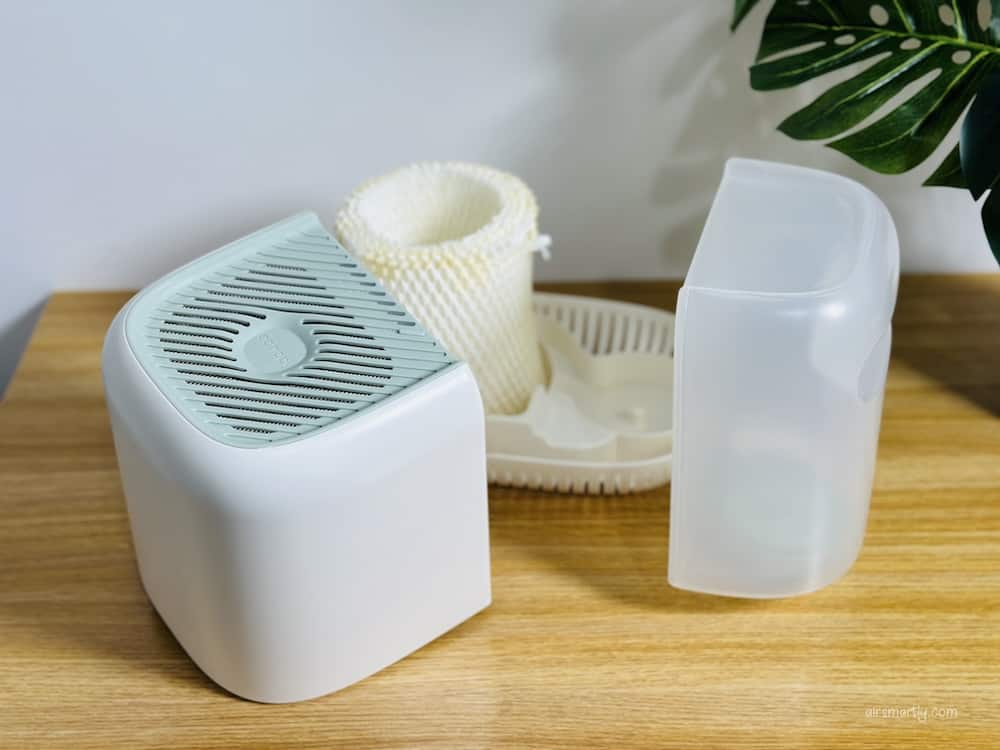
Humidifiers offer great benefits, but they can be challenging to maintain. Stagnant water in the tank can turn this device into a breeding ground for mold and bacteria. Hence, we allocate 10% of the weight to the ease of cleaning in our assessment.
This aspect is subjective, and during our evaluation, we consider factors such as the time required for cleaning, the presence of hygiene blind spots, and whether it is prone to emitting foul smells.
Here’s the scale we use to determine ease of clean scores:
10 – Extremely easy to clean and doesn’t produce smells even if you forget to replace the water after 1 week.
9.5 – Very easy to clean.
9.0 – Easy to clean, but it may be prone to producing smells if you don’t empty the water regularly.
8.5 – It is generally easy to clean, but you should be careful.
8.0 – There are one or two hygiene blind spots, or cleaning takes more than 60 minutes.
7.5 – Difficult to clean. There are a few hygiene blind spots.
7.0 – Very difficult to clean. You may need to buy a new one after the season.
Usability 10% – Subjective Assessment
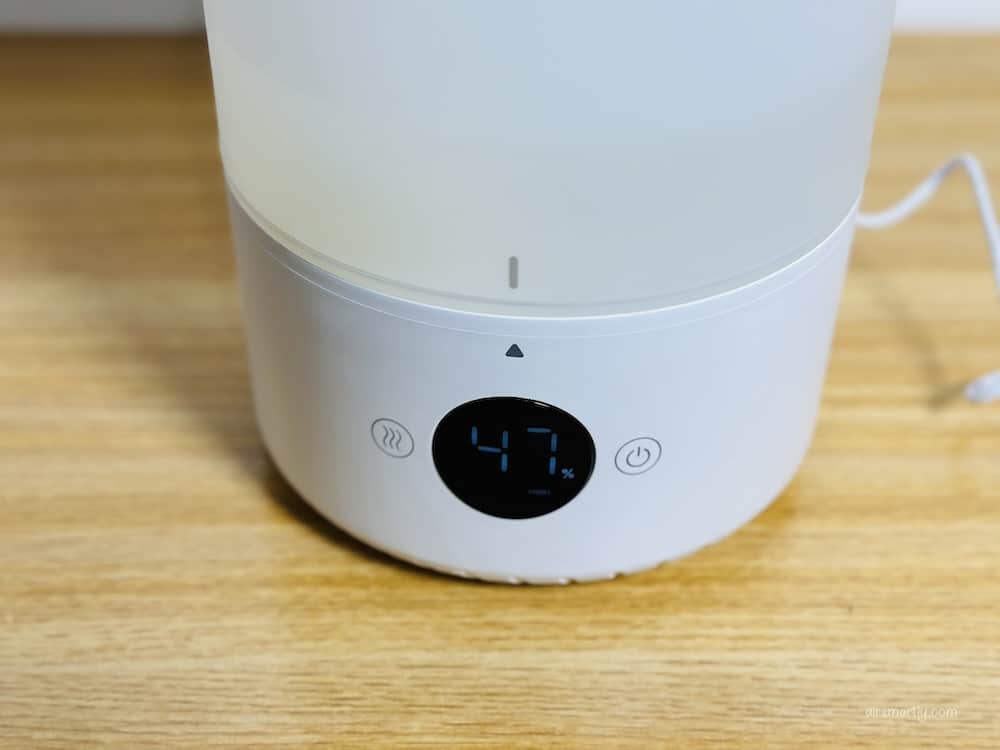
Our usability rating considers two key factors: setup and ease of use. The setup contributes 30% to the overall rating, while ease of use holds a higher weight of 70%. Both factors are subjectively evaluated in our rating process.
Here’s the scale we use to determine ease of setup scores:
10 – You can set it up within one or two steps.
9.5 – Very easy to set up.
9.0 – Easy to set up.
8.5 – It is generally easy to set up.
8.0 – It takes more than 10 minutes to set up.
7.5 – Difficult to set up.
7.0 – Very difficult to set up.
Here’s the scale we use to determine ease of use scores:
10 – Extremely easy to control, and the display is easy to recognize.
9.5 – Very easy to control.
9.0 – Easy to control.
8.5 – It is generally easy to use.
8.0 – Some functionalities are difficult to control.
7.5 – Difficult to use.
7.0 – Very difficult to control, or the display is hard to recognize.
Noise Level 10% – Objective Test
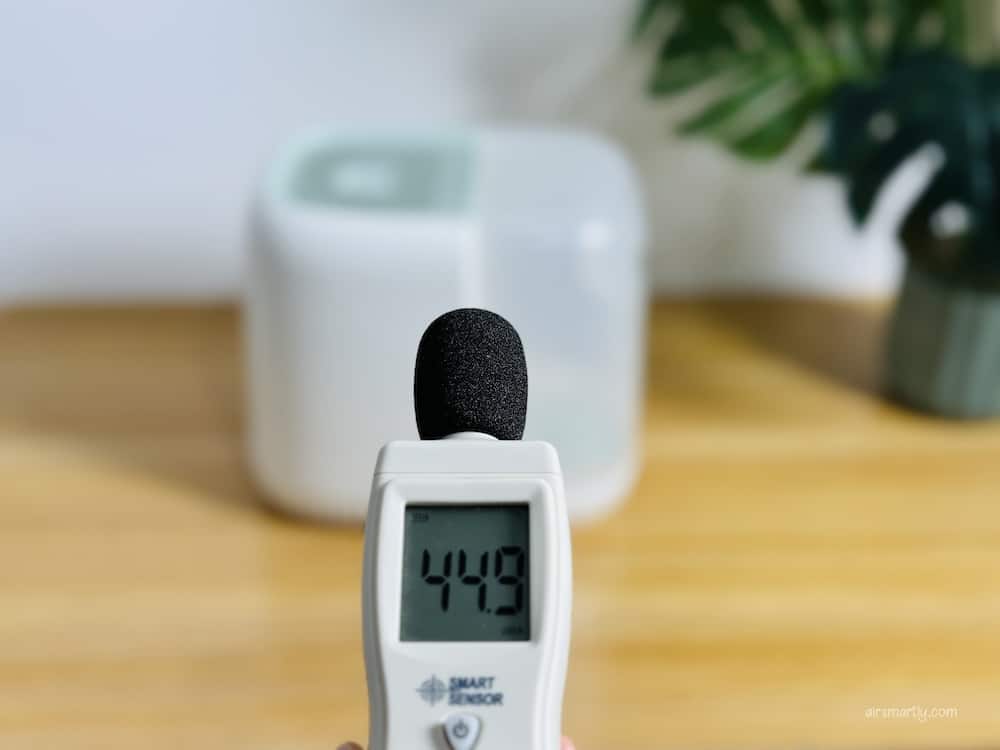
Lots of customers prefer running their humidifiers overnight; understandably, noise level becomes a key consideration. We utilize a sound meter positioned just 0.5 meters away from the machine for our tests.
The noise rating is based on the noise generated at the highest fan speed or mist level. Additionally, we measure the noise level when the mist level or fan speed is set to low, offering our audience a more comprehensive understanding.
Following the guidelines from the National Council on Aging, any machines producing sounds surpassing 70 decibels (dB) are considered unsafe. Consequently, we’ll assign a rating of 7.0 to all devices exceeding this noise threshold.
Here’s the scale we use to determine the rating of the noise level:
10 – noise level ≤ 40db
9.5 – 40db < noise level ≤ 45db
9.0 – 45db < noise level ≤ 50db
8.5 – 50db < noise level ≤ 55db
8.0 – 55db < noise level ≤ 60db
7.5 – 60db < noise level ≤ 65db
7.0 – noise level ≥ 65db
Build Quality 5% – Subjective Assessment
The longevity of a humidifier and the quality of user experience it provides are often directly tied to its build quality. Our assessment of build quality is subjective and based on our daily experiences.
Here’s the scale we use to determine the rating of the build quality:
10 – Exceptional build quality.
9.5 – Great build quality.
9.0 – Good build quality.
8.5 – The build quality is generally good.
8.0 – The build quality is acceptable.
7.5 – Flimsy build quality.
7.0 – Very poor build quality.
Warranty 5% – Objective Assessment
Warranty is crucial for any electrical device. A humidifier with an extended warranty can save you from additional expenses over an extended period.
10 – 5+ years.
9.5 – 2 years.
9.0 – 1 year.
8.5 – 0.5 year.
7.0 – No warranty information provided.
Price 0% – Objective Assessment
Price is not a scorning factor in our system. However, nobody likes to set a budget while shopping but it is important. To convey the pricing information of the humidifier, we utilize the $ symbol.
$$$$$ – Expensive
$$$$ – Above the average
$$$ – On average
$$ – Cheap
$ – Extremely cheap
Filter 0% – Subjective Assessment
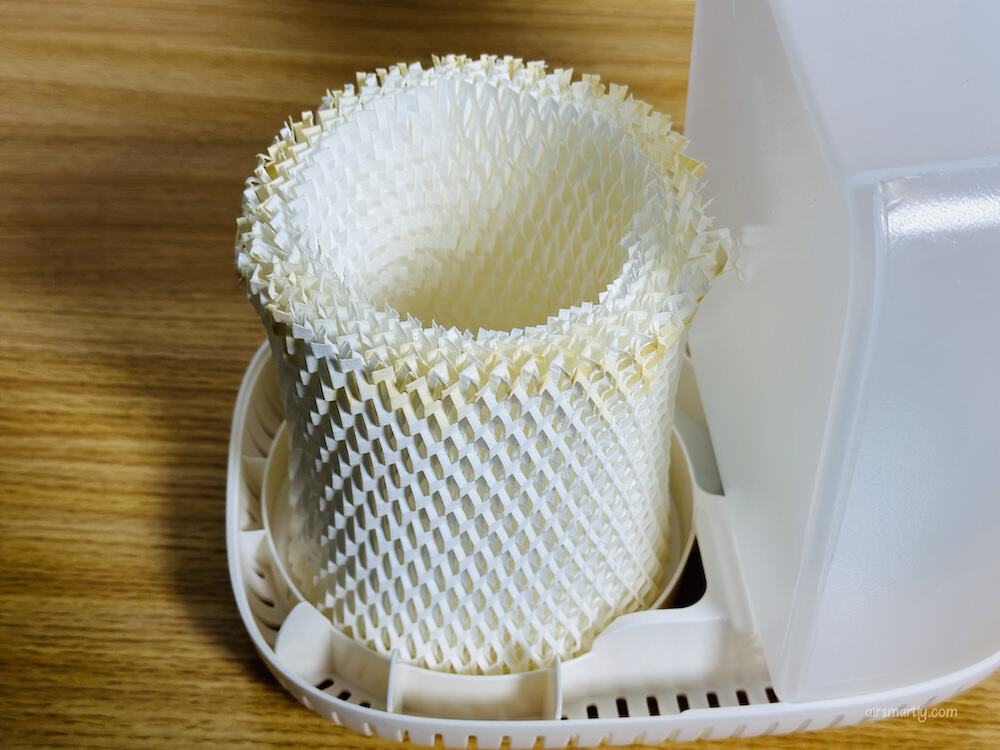
Most evaporative humidifiers and some ultrasonic humidifiers use filters. We will assess the filter type and replacement frequency. It will not affect our rating.
Capacity 0% – Objective Assessment
This is also not a scoring factor. A humidifier with a higher water capacity often means that you need to refill it less frequently. However, we recommend emptying the tank every day, so we don’t consider a humidifier with a larger capacity as necessarily better.
Size 0% – Objective Assessment
Some people prefer a large gadget, while others don’t. We will provide information so that you can have a better idea of how much space you need to leave for it.
About Our Rating System
At Air Smartly, we continuously refine our humidifier rating system. While we strive to conduct every test and assessment carefully, our system is not perfect, and the test results may still contain errors. The testers we used may also not be as accurate as we expected.
If you have better solutions or find any errors, please let us know [email protected].
